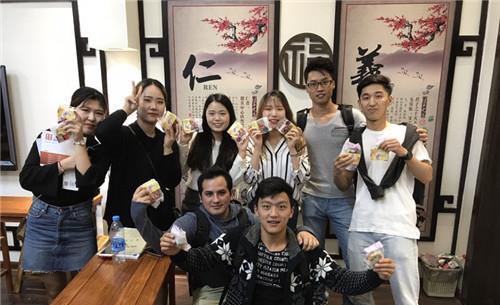In Central Asia, Russia is close to the territory of Kazakhstan and has an unusual village. Most of the people there have a Chinese appearance, yellow skin and black hair, and one mouth is a Shaanxi dialect.

They called the government Yamen, the cadres were Yamen, the planes were wind boats, and the songs were traditional Qin. Although they live in Central Asia, they retain the customs of life in the northwest of our country, and do not rely on grazing, but on planting. These people, known as the Dungans, had no writing and could only speak the traditional Shaanxi dialect, and much earlier, they were all Chinese subjects.
This matter has to start from the Qing Dynasty. From 1862 to 1877, a group of Shaanxi residents, led by the generals, crossed the icy Tianshan Mountains and arrived in Russia from Kashgar due to the war in the northwest, and when they set out, there were only more than 3,000 people left at the destination. These residents near Shaanxi settled in Russia, that is, in the territory of Tsarist Russia at that time, forming the earliest scale of Shaanxi Village.
Later, as the Qing government signed more and more unequal treaties with Tsarist Russia, the land in the northern part of the Qing Dynasty shrank more and more, and coupled with the contradictions between Tsarist Russia and the Qing government, the northwestern residents once again moved some people to the territory of present-day Russia. After two major population migrations, the "Shaanxi Village" with a population of more than 120,000 has slowly developed.
In 1979, Wang Guojie, a graduate student in the history department of Shaanxi Normal University, inadvertently read about this past in a historical document, and he began to worry about these compatriots living in Russia, and in 1990, he finally got the opportunity to be sent to Russia (then the Soviet Union).
At the junction of Russia and Kazakhstan, he finally found the legendary Shaanxi village, and as soon as he entered the village, he was almost moved to tears - it was so kind to hear the hometown dialect in a foreign country. The residents of Shaanxi Village were also surprised that Wang Guojie actually said the same thing to them, and opened his mouth and asked, "You came from the Qing Dynasty?" "Although the Qing Dynasty is dead, they still habitually call their distant hometown the Great Qing.
After determining that Wang Guojie was really from China, the young people in Shaanxi Village immediately shouted loudly: "The old uncle's family has come!" The uncle's family is coming! The sound resounded throughout the village, and door to door opened to entertain this hometown visitor who had come from afar—in some Shaanxi dialects, uncle means Han Chinese.
The original Shaanxi customs preserved in Shaanxi Village deeply impressed Wang Guojie, and now the domestic Shaanxi piece can rarely preserve the past customs so well. So 3 years later, he embarked on the road to visit Shaanxi villages again, and went to 15 Shaanxi villages in one go.
He recorded all what he had seen and heard in these villages, and when he returned home, he brought a large bundle of materials. All of these materials were compiled into a book by him, forming a history of the development of Shaanxi Village, that is, the Donggan people. Because of the information brought back by Wang Guojie, Shaanxi Village gradually became known to everyone, and reporters began to go here to conduct interviews.
Today's Shaanxi villages are living very well, and many villages have cars, roads and networks. When they first arrived in Central Asia, they had to eat by herding and building houses for the Russians, but now they can hire Russians to help them herd and grow their cattle.
Reference: "Shaanxi Village" on the Silk Road